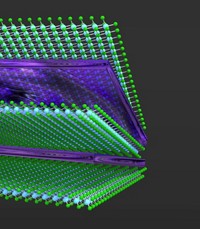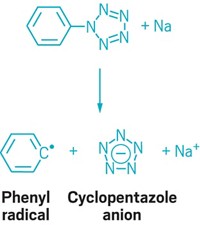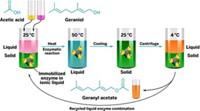Advertisement
Grab your lab coat. Let's get started
Welcome!
Welcome!
Create an account below to get 6 C&EN articles per month, receive newsletters and more - all free.
It seems this is your first time logging in online. Please enter the following information to continue.
As an ACS member you automatically get access to this site. All we need is few more details to create your reading experience.
Not you? Sign in with a different account.
Not you? Sign in with a different account.
ERROR 1
ERROR 1
ERROR 2
ERROR 2
ERROR 2
ERROR 2
ERROR 2
Password and Confirm password must match.
If you have an ACS member number, please enter it here so we can link this account to your membership. (optional)
ERROR 2
ACS values your privacy. By submitting your information, you are gaining access to C&EN and subscribing to our weekly newsletter. We use the information you provide to make your reading experience better, and we will never sell your data to third party members.
Materials
Ionic Liquids Stable At High Temps
New ionic liquids may be most thermally stable yet; samples survive more than 90 hours of heating
by Elizabeth K. Wilson
August 12, 2013
| A version of this story appeared in
Volume 91, Issue 32
Ionic liquids—essentially liquid salts—can be used in all sorts of ways, including as solvents and electrically conducting fluids. Researchers have been tinkering with various properties of ionic liquids, in particular their stability at high temperatures, to make them useful as heat-transfer fluids. James H. Davis Jr. of the University of South Alabama and colleagues have now developed what may be the most thermally stable ionic liquids yet. The group synthesized a suite of new tetraarylphosphonium cations that pair with the anion Tf2N– [bis(trifluoromethylsulfonyl)imide] to form ionic liquids that are stable at temperatures of up to 350 °C. The researchers found that even after heating at that temperature for 96 hours, the material remained colorless and less than 10% had evaporated (Chem. Commun. 2013, DOI: 10.1039/c3cc44118k). In contrast, other popular ionic liquids with cations such as imidazolium, quaternary ammonium, or tetraalkylphosphonium thoroughly decomposed when subjected to those conditions and left dark solids at the bottom of the dish. The researchers are now working to expand the ionic liquids’ capabilities by decreasing their melting points yet maintaining their thermal stability.





Join the conversation
Contact the reporter
Submit a Letter to the Editor for publication
Engage with us on Twitter